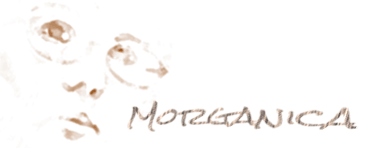If you mix frit colors–as all pate de verre and frit painting artists do with abandon–you quickly learn about reactivity between colored glasses. Try warming up chill BE Salmon Pink with a little BE Medium Amber, and the resulting sludgy grey-brown will stick in your mind forever.
Or so I thought. At a beginning casting workshop recently, one of my students complained that it was tough to simply remember what reacted with which. Or worse, when they combined glasses from two manufacturers, they couldn’t find any reactivity info at all, which apparently resulted in some unpleasant surprises.
I gave them some rules of thumb I go by when I don’t have access to a reactivity chart and/or have no time to check.
Problems usually start when you blend warm colors with cool. And don’t assume that neutral colors are, well, neutral. Warmer whites and creams, in particular, can be reactive. Beyond that:
- Watery colors probably contain copper, i.e., it’s a cool, clear blue edging toward green, or a green that’s straying into blue. Keep it away from glasses that contain sulfur or selenium.
- Magentas, red-purples and warm neutrals may contain lead. Keep them away from sulfur and selenium.
- Fiery colors (hot yellow, orange, red, even yellow-green), often contain sulfur. Keep them away from glasses with lead, copper, or silver.
- Earth colors, including earthy neutrals, often contain selenium. Keep them away from lead and copper glasses, and since many earthtone glasses also contain sulfur, watch how you use them with silver, too.
There are exceptions, of course. To me, BE Sunset Coral looks more like an earthtone, but it’s a lead glass. And I’ve never figured out a rule of thumb for silver glasses (although I’m sure there is one).
The best option, of course, is to look it up. The BE website used to host really nice reactivity charts which made it easy to compare multiple colors. (see below for an update) If you click the old links now, you’ll be invited to select a color, then figure out where its reactivity data is hidden (hint: it’s on the “sheet” tab–if you don’t see anything there, it’s not a reactive glass). OTOH, at least Bullseye mentions reactivity on their website–most glassmakers seem to like to surprise folk.
BE’s new method is a bit of work if you’re running through a dozen colors, looking for possible reactions, but there are other places to find charts. Abe Haight has just published a very nice set of reactivity charts which include a list of non-reactive glasses. That last is very handy to have around when you’re trying to find glasses that won’t react with each other.
Lauri Levanto has taken it a step farther and published not only Bullseye reactivity charts, but also a list of the colors with his (and Bullseye’s) notes on the strength or type of reaction you’ll get.
Understanding the strength of the reaction can immensely enrich your palette. You can tone down or add shading to a color by adding a little of its reactive complement. Or you can use two strongly reactive glasses together to create a richer, more interesting brown/black/grey. Once you get reaction strength, you can use powders to shade sheet glass compositions and make them look a little less cartoonish.
The Bullseye charts don’t do much as far as gauging the strength of the reaction is concerned. Spectrum’s a bit better in that direction; their reactivity chart not only rates reaction strengths but also includes pictures so you know what they’re talking about. However, the charts themselves are limited to how Spectrum glasses work with their “Red Reactives,” a line of glasses designed to react with copper glasses.
The chart, therefore, will show you approximately how much copper is in their glasses, but it won’t show you how much selenium, lead, silver or sulfur you’ll find…a pretty critical lack.
You can also get some very cool effects by sifting and drawing with clear powder over a reactive glass, then sifting the compliment reactive on top. The colors will react wherever the clear isn’t, and gradually shade in the thin spots, which can give a painterly effect.
When the manufacturer doesn’t publish the strength or color of their glass reactions, it’s up to you to figure it out by making tests and carefully logging your results. Then you keep all that info near your workbench, and refer to it BEFORE you open the frit jar.
Some artists post a list on the wall, others carefully and neatly label each frit jar. As I’ve mentioned before, I keep that info (along with the results of my color tests) in the manufacturer’s latest catalog, and that catalog never leaves my work area.
And the day they actually post that stuff on the jar is the day I’ll be a happy, happy camper. 😉
Update, 2014: New location for reactivity chart
Whew! Next step, the catalog? 😉


Hi and thank you for a very important reminder re: reactions! Finally had to organize my dozens of frit jars as I brought them home by taping a label on jar front indicating what it reacts with (or not!), then store like colors & reactions together on shelves. Label is large enough so at a glance I can easily see if I’ll have unwanted/wanted reactions from frit as I select. Using BE frit and BE chart . . . hoping all stay fairly accurate :- )
The reactions occur where the glass touches…or rather, where the chemistry happens…ie. copper touches sulfur…turns color…
does that make sense? I’m nowhere near as wordy and descriptive as Cynthia…
Great post, BTW…per usual 😉
Sorry but a real dumb question.
Does the reaction occur in the open air part of the fusing, or is it between layers and can become visible coldworking through the layers?
I haven’t seen enough and the kilns down.